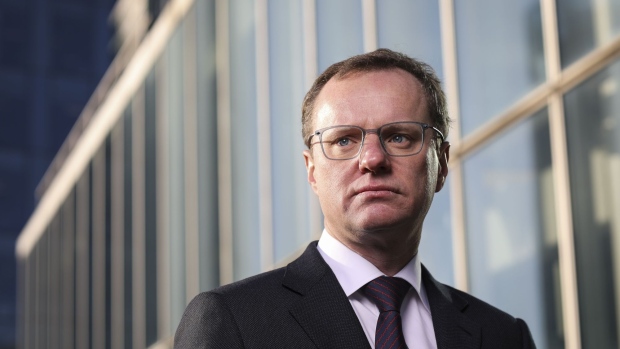Sep 25, 2020
BlackRock's Boivin says rebound is real, policy support crucial
, Bloomberg News

The global economy is bouncing back faster than expected, but downside risks remain and more help from policy makers is necessary for a full recovery, says the head of research at the world’s largest money manager.
Jean Boivin, head of BlackRock Inc.’s investment institute, said the economy is recovering from a “very deep shock” and should return to pre-pandemic levels sometime in the next 18 months.
“The restart is real,” Boivin said at Bloomberg’s Canadian Fixed Income Conference. “What is really crucial is we have the continuous policy support,” he added, pointing to the deadlock among U.S. lawmakers on a new round of stimulus.
Canada’s economy has “a bit less downside risk” and should see output back to pre-recession levels sometime in 2021 because the policy landscape is more certain, Boivin said during a panel discussion with Stefane Marion, chief economist at National Bank Financial, and Beata Caranci, chief economist at Toronto-Dominion Bank.
Employment will take longer to fully recover than gross domestic product, Marion said. That won’t be until 2022, which “will bring tremendous challenges to policy makers,” he said.
The labour market will experience persistent scarring because of the pandemic, Caranci said. However, the recent “massive revisions” by the OECD and the U.S. Federal Reserve as hopeful signs, she said. The Paris-based OECD said last week the global economy will shrink 4.5 per cent in 2020, less than the previous forecast of a six per cent contraction, with forecasts for China, the euro area and the U.S. all improving.
The OECD’s forecast says Canada’s economy will grow four per cent next year after a 5.8 per cent contraction this year. Still, Caranci doesn’t see the Bank of Canada raising interest rates until 2024 at the earliest, given the lack of inflation.
“Central banks would prefer that expectations rise above two per cent. That is a high bar, given what we’ve seen over the past decade,” when core measures consistently undershot that level, she said.
Marion sees higher inflation as possible. “Unlike in 2008-09, with fiscal policy moving with monetary policy, I think that the 2% to 3% inflation world is possible to achieve given these circumstances,” he said, adding the economic cold war between the U.S. and China and the fight against climate change may add to inflationary pressures.